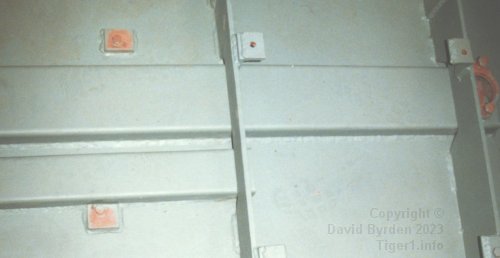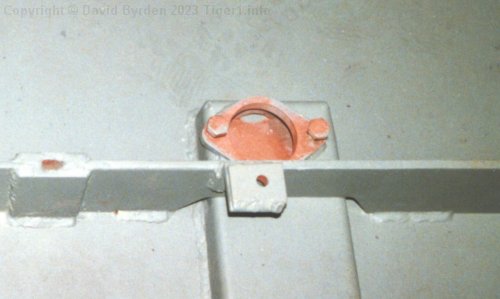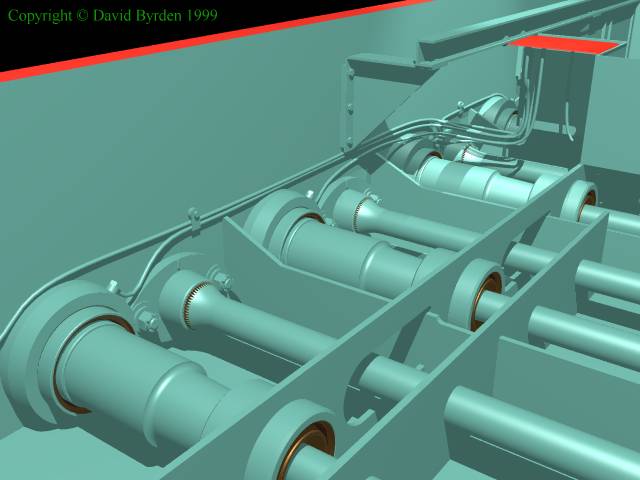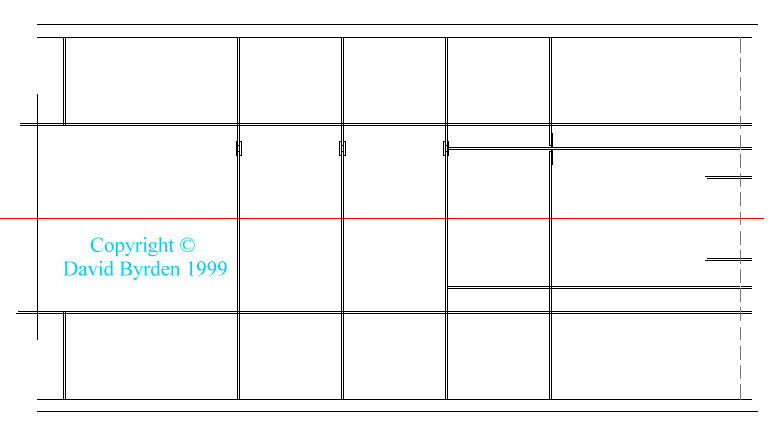
A pair of air ducts ran along the hull's bottom plate. This photo shows the forward ends of both ducts. The front of the vehicle is to our right.
The narrow duct was used only when the vehicle was underwater; it delivered air from the snorkel tube. It was cut off abruptly near the center of the vehicle, underneath the slip-ring transfer unit (which is removed from this photo).

The wide duct extended farther forward than the narrow one. This is its front end. There is a flange for attaching a tube that connects to the back of a gearbox housing. This sheet-metal housing was not sealed all round; it allowed air to enter at the front. The other end of this wide duct was in the engine compartment, near the rear wall. In the middle of the vehicle, the wide air duct had a branch leading upwards to a fan.

This model shows a general view of the ends of some torsion bars.

This diagram shows a plan view of all the struts, including short struts at the front of the vehicle to support the gearbox.
[1] Survey of Tiger 250122, at Bovington museum, by David Byrden
[2] Der Panzerkampfwagen VI und seine abarten, Walter J. Spielberger, Motor Buch Verlag